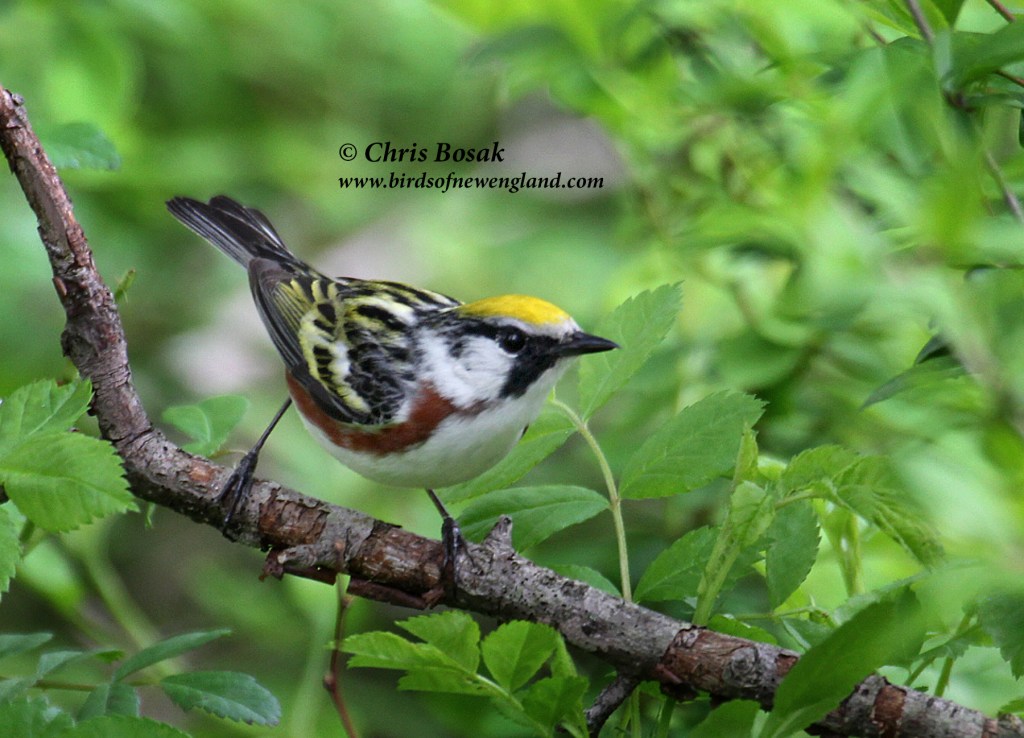
Welcome to May, arguably the best month of the year for birdwatching.
So many exciting things happen in the bird world in May that it’s hard to know where to begin. The breeding season is in full swing and our year-round birds as well as newly arrived migrant birds are either looking for nesting sites or already raising young. Suddenly our feeders are visited by colorful newcomers such as rose-breasted grosbeaks, Baltimore orioles or indigo buntings. Waders are back in full force stalking our ponds and rivers.
When it comes to May, however, talk of the birding world has to begin with warblers, those small and often colorful Neotropical migrants that add life to our neck of the woods every spring. Some of these warblers will simply stop by for a few days before heading farther north to their breeding grounds. Many, however, will find a suitable place to raise young and will be with us until the fall.
Here are some quick, random thoughts on warblers as we head into “warbler season.”
Most warblers are sexually dimorphic, meaning the males and females have different appearances. Some are vastly different, such as the black-throated blue warbler, but many are fairly similar with females being slightly more dully colored.
There are early warblers and late warblers. Pine, palm, yellow-rumped, and black-and-white are some of the early arrivals. By the second week of May, most of the warblers have arrived. In fact, many of them are here and gone already.
The yellow warbler is one of the most common warblers in New England, and it nests throughout the region. It favors brushy habitat on the edge of woods and its “sweet, sweet, I’m so sweet” song is ubiquitous.
The yellow warbler is also a good argument for capitalizing bird names. Newspapers follow AP style, which is why bird names are not capitalized in this column. Capitalization, however, would eliminate any questions about what bird I am talking about. If I write that I saw a Yellow Warbler, you’d know exactly what species I saw. If I write that I saw a yellow warbler, I could be referring to any number of warblers with yellow plumage.
Warblers may be found in a variety of habitats throughout New England. Many warblers favor woods with tall deciduous trees, many favor coniferous forests, and others like shrubby areas. There are even warblers, such as the ovenbird, that nest on the ground.
It’s the warblers that favor deciduous trees that cause “warbler neck” among birdwatchers. That is a condition by which birders get sore necks from looking through binoculars among the treetops trying to pinpoint where a song is coming from. It sounds funny, but it’s a real condition. You can get so caught up in trying to find the tiny birds that you don’t realize how much strain you are putting on your neck.
Speaking of singing, many warblers are more easily recognized by their songs than their appearance. That’s because many warblers are nearly impossible to find among the leaf-covered canopy but their song may be heard easily. It comes in handy to know as many warblers songs as possible.
The spring warbler season is a highlight for most birders as the tiny birds are vocal and wearing their bright, shiny breeding plumage. In the fall, however, warblers are largely silent and their plumage has faded or molted, making them unrecognizable from their spring selves. That’s a column for another day.
Get out and enjoy all that May has to offer birdwatchers. There’s plenty of it.

i love birds
LikeLiked by 2 people
We’ve had a great birding season in the Lakes Region of NH. Along with Warblers, we’ve had Baltimore Orioles, Grosbeaks. On the 4th we had a Hummingbird and today our first Indigo Bunting .
LikeLiked by 1 person